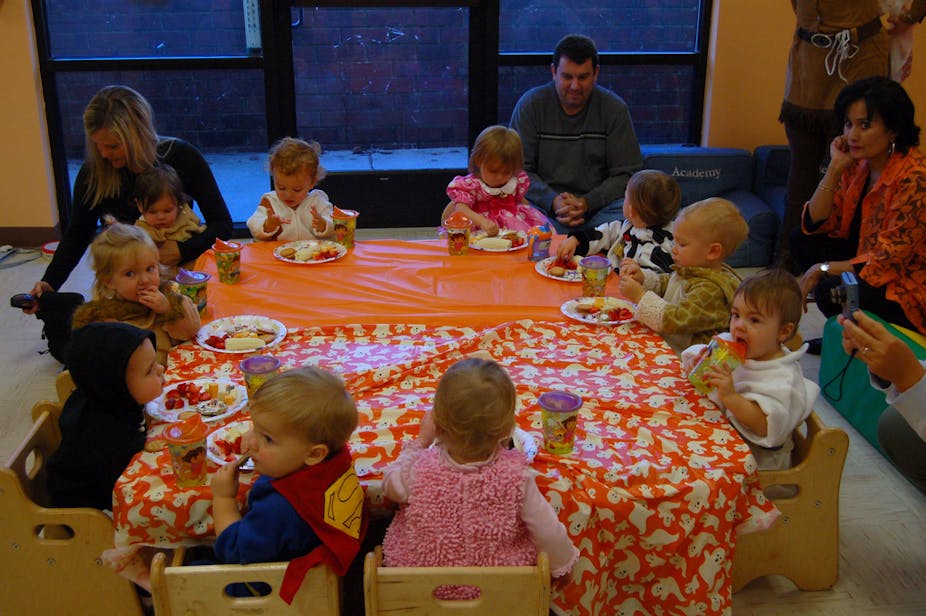It comes as no surprise to see that parenting programs attract mothers. Drop into a “toddler taming” discussion, a workshop on parents and literacy or a seminar about communicating with your teenager and you’ll see mums by the score.
What is surprising, given the demonstrated benefits to children of fathers’ involvement, is that no real effort is made to include fathers in parenting programs. It’s as if parenting programs belong in the 1950s where children are simply mums’ business.
When Kate Ellis announced a grant of $32.5 million to roll out a home visiting program to improve interaction between parents and their children, the fact that 98% of participants were mothers wasn’t mentioned. When NSW Health paid $5.2 million to have staff trained to deliver the Triple P Positive Parenting Program, no one asked if they’d be trained to include fathers.

As program managers rightly point out, dads aren’t banned from attending so there’s no outright discrimination. And many parenting programs do have some fathers enrol, although many drop out along the way.
So does the problem lie with the dads or the programs?
One way to answer this question is to see if existing programs improve fathers’ parenting. If the programs work for dads, then that’s a start and the problem may be in the marketing.
But here’s the rub – given only a handful of fathers attend, measuring any change in their parenting is impractical. And the wide variety of programs makes it hard to pin down exactly how many dads are attracted to which program.
The most likely place to find enough dads is in one of the mega-programs for parents that are repeated (franchised) across many locations. Queensland-based Triple P is a prime example. Its programs are offered in five levels of intensity and it operates in most Australian states and overseas.
Since dozens of studies on the effects of Triple P have now been completed, the results for mothers and fathers can be separated to measure the program’s effect.
Last week, the US-based Fathering journal published an analysis using all the English language randomised controlled studies of Triple P published before June 2011. The study examined the number of fathers compared with mothers, how many fathers stayed the distance and what effect the program had on fathers’ and mothers’ parenting.

Not unexpectedly, the number of fathers attending was low. Out of the 4959 parents recruited into these studies, 983 (20%) were fathers. In one of the largest Australian studies, only 16 fathers were recruited compared with 1,610 mothers. And no, this wasn’t because all the participants were single mothers.
Determining how many fathers stayed until the end was difficult because so few studies evaluating Triple P kept track of fathers. Some studies managed to keep dads until the final session while others lost every dad. So getting an overall figure is just about impossible.
The effect of the program on mothers’ and fathers’ parenting was judged by their answers to questions measuring how lax, verbose or overreactive they were. Overall, the parenting of fathers did improve, although it was significantly less than that for mothers.
If fathers are to be included alongside mothers, and taking this report-card for Triple P as a guide, parenting programs need to make changes.
Clearly, the way that parenting programs are now marketed isn’t working. The fathering paper authors point to successful examples from other areas that could be applied to programs like Triple P. Program content and delivery (male facilitators?) also needs to reviewed and changed to better apply to dads’ parenting.
Finally, researchers should be steered to include fathers’ data in their parenting studies as a matter of course. Including fathers in the support that we give to parents is an obvious way to balance up the gender ledger in the child care area.

